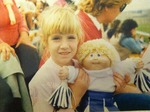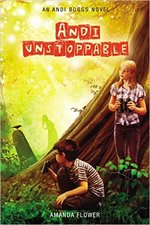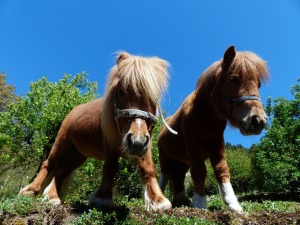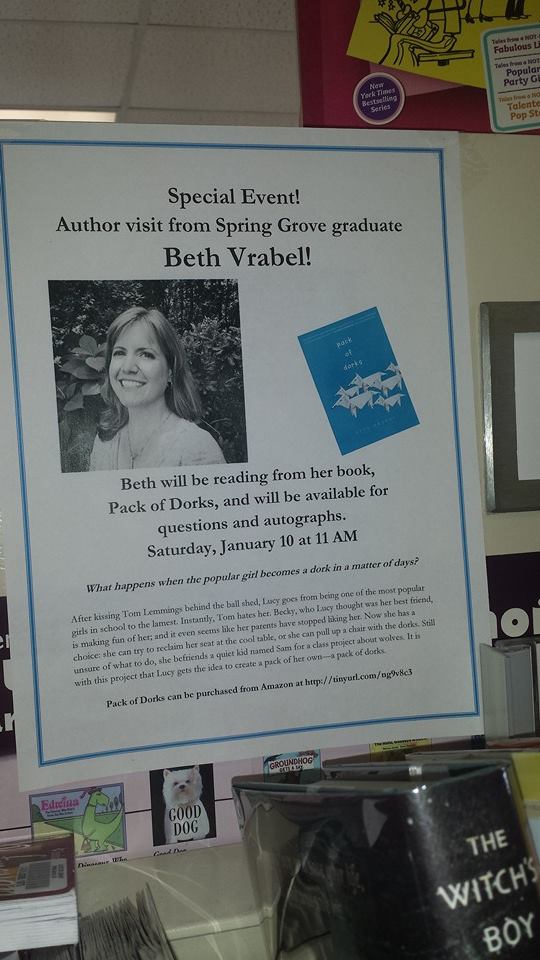 Inadequate 7-year-old me with superior cheerleading Cabbage Patch Doll
Inadequate 7-year-old me with superior cheerleading Cabbage Patch Doll
When I was little, I had this recurring fantasy that I’d wake up one morning and be awesome at gymnastics.
I’d be able to do back handsprings into front handsprings and then a twisty thing and finish with a kick that sent my foot up past my ear.
The fact that I had never taken a gymnastics lesson had absolutely no bearing on my belief that one day—any day—this awesomeness would kick in.
I knew exactly what I’d do: At recess, I’d head out to the blacktop like it was any other day. While everyone else clamored to the monkey bars or the slide line, I’d casually stretch a little and then—BAM!—go Mary Lou Retton on their butts.
Everyone would gather round. Mouths would drop. And then—cheering that could be heard for miles. I’d be hoisted onto the fourth-graders’ shoulders (I was in second grade when this fantasy began). The gym teacher would beg me to lead class for the remainder of the year.
“Not one lesson?” he’d ask as I humbly shrugged in front of my minions.
Sadly, this never happened.
(I was able to work in an awesome gymnastics scene into PACK OF DORKS, but it didn’t work out nearly as well for the character involved.)
The closest I came to this was teaching myself how to do a cartwheel. To be considered for the cheerleading team in second grade, each girl had to perform a cartwheel during try-outs. I could barely handle a somersault.
For weeks prior, I sadly sat around and thought about cartwheels and the shame that would befall my family if I were the only daughter not accepted on the cheerleading squad. (I was prone to dramatics.) This wallowing was in lieu of actually attempting cartwheels.
The day of the try-outs, Mom woke me up before heading to work and said if I didn’t know how to do a cartwheel by the time she got home, we’d skip going all together. “So maybe you could practice?” she suggested.
I headed to the basement and did a hands-on-the-floor-legs-spasm-half-jump thing. “This is never going to work,” I told myself. “I am the worst cartwheeler in the world.”
This allowed me to luxuriate in the idea that I’d fall and break my shoulder attempting to do a cartwheel. The cheerleading judges would be so heartbroken over their cruel and unnecessary standards and instantly accept me onto the team, where I’d top each pyramid since my weakened shoulder would allow no other position.
After a few more minutes, I tried again, this time keeping my legs a little stiffer. And fell into a heap. “I can’t even do a stupid cartwheel. Everyone else can, but I can’t even do this. I’m so stupid!”
More hateful fantasies, this time involving the judges laughing at me.
Another attempt. Sprained fingers. Hollow heart.
Filled with anger, I tried again. This time, when I tried to wallow, a little voice whispered that I did have some decent speed that time. Instead of hating myself, I thought, “Maybe if I kept my arms stiff…”
I tried again, right away before that voice shut up.
Crumpled heap o’ tiny Beth.
I hopped up and tried again. Not awful, that voice whispered.
You can see where this is going, right?
It took a few hours—and a lot of self (har har) cheerleading—but I did a cartwheel. And went to try-outs, where angels sang, light flooded my head from the sky, other second-grade cheerleaders begged for me to be instant captain, and cheerleading judges held up perfect tens.
Actually, that year the judges decided to keep everyone who tried out.
 But I did do a cartwheel during the half-time dance. (Only out of desperation when the coach saw I couldn’t keep the beat. But still!)
But I did do a cartwheel during the half-time dance. (Only out of desperation when the coach saw I couldn’t keep the beat. But still!)
So why I am telling you all of this? I have no idea.
But I’m at this rough part of the story I’m working on. The story isn’t flowing yet, and I feel like one the kindergarteners I work with as I struggle to get the words onto the page, stretching out and doubting each word.
So I’m at this awkward point—a seven-year-old in the basement, crumpling with each cartwheel attempt. I can listen to the voice that tells me I’m stupid and unoriginal and tapped out. Or I can lean into the whisper that’s suggesting tightening up this phrase, adding definition to that character, and just finishing one more page.
Obviously I’m currently listening to the third voice that says “write a babbling blog post to dodge actually continuing writing.”
 This is my daughter’s idea of light reading to bring along to the pool.
This is my daughter’s idea of light reading to bring along to the pool.










